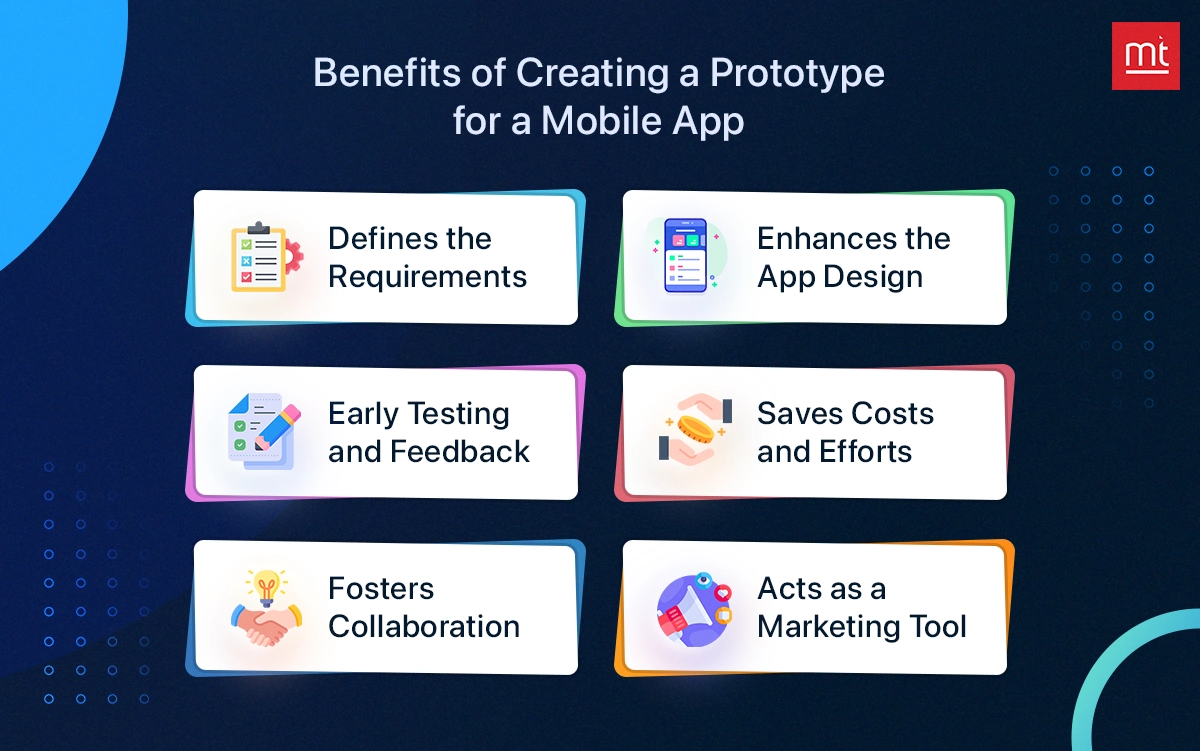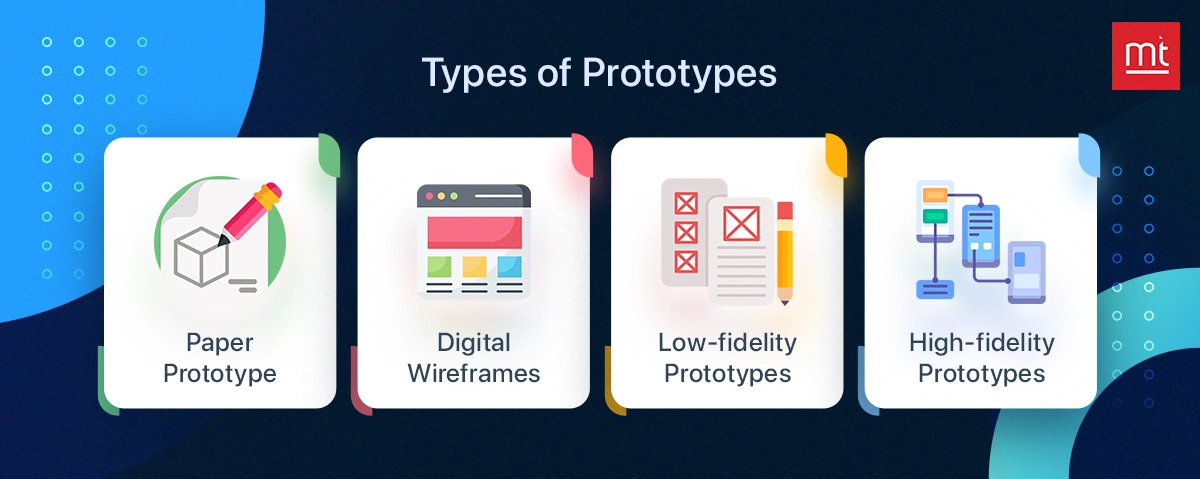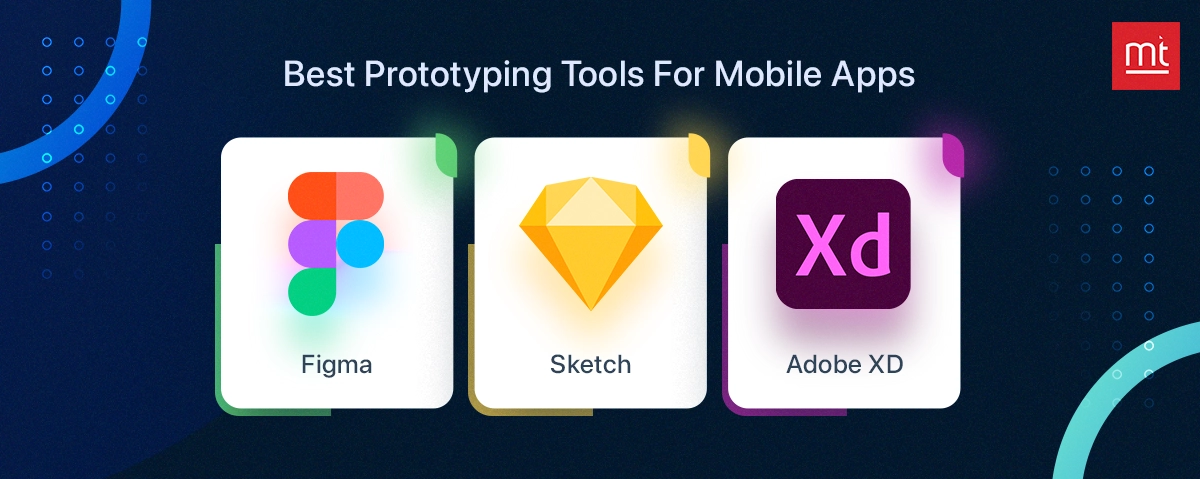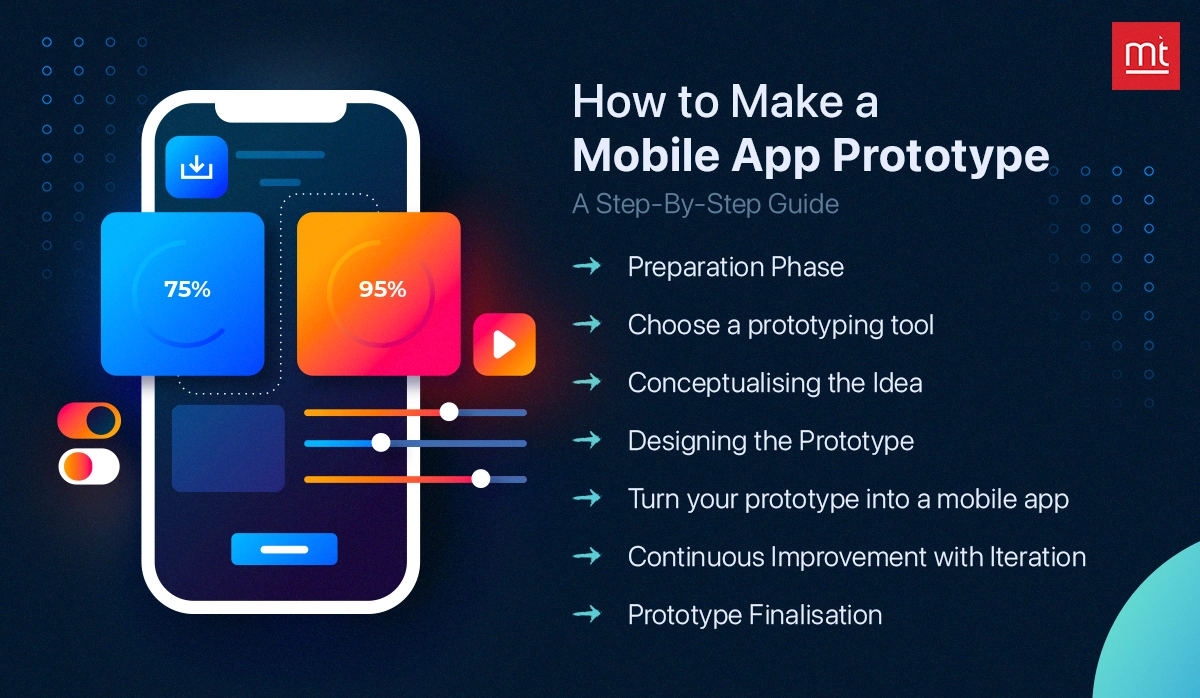Get Free Trial Week Developer Access, Try Before You Hire. Click Here to Claim Now
Introduction:
Developing a mobile app is akin to a roller coaster ride, with several twists and turns waiting for you. However, this adrenaline-charged journey can quickly become an anxiety filled move if you don’t have work with a prototype.
You will navigate through misaligned expectations, miscommunications about design, increased costs, poorly designed interactions and inefficient processes.
According to a recent study by Forrester, prototype development can accelerate the time-to-market by 50%.
It helps identify the flaws in design during the early stages and helps work through the usability issues. Moreover, you will be able to invest in the final product wisely by addressing the risks and removing the issues.
There is a detailed process that can help develop a prototype for the mobile application. This guide will help you navigate the mobile app prototype development to ensure a smooth development.
What is a Mobile App Prototype?
A mobile app prototype is basically a detailed model of your planned solution. It gives all the stakeholders a detailed visual of how you aim to develop the application.
You can use the prototype to introduce the interface and experience design you have planned for the end users. This is also the time to showcase the features and functionality you will be offering the users.
There are three types of prototypes- the early sketches, the low-fidelity models and the high-fidelity models. These three will together drive the developer towards the final application.
3 Key Features of App Prototyping
- The prototype is a visual presentation of how you aim to define the layout, add elements and create the user interface for the users.
- Advanced prototypes allow the developers to add buttons that users can click on to navigate. It can also allow users to perform the basic functions to get an understanding of how it works.
- There is a feedback tool available with prototypes for users to share their issues with the app. It will help developers identify the usability problems and functionality gaps in the early stages.
Let’s look at an example of how app prototype development can help your business. Imagine you are planning a high-end and complex mobile application for the food delivery segment. However, you are not sure if the users are ready for the application.
Moreover, you aren’t sure what the users expect from this app. By offering an insight into the app's visual, you can get the users to validate the concept. Moreover, they would tell you what all features you can add to ensure best engagement.
What Are the Benefits of Creating a Prototype for a Mobile App?
If you are still contemplating whether prototype development is good for the mobile app, you might want to visit the benefits.

#1. Defines the Requirements
Using a prototype development, the developers have clarity over the vision and requirements of the application. They have a detailed understanding of the goals and purpose of the application, thus reducing miscommunication and issues during development.
#2. Enhances the App Design
You can create an application using the UX-led approach. The design would be in sync with the user’s requirements and existing learning curve. Moreover, this approach helps determine usability issues in the budding phase. You will be able to create a more intuitive application with this approach.
#3. Early Testing and Feedback
You can get valuable feedback from the users and stakeholders on the application in the early stages. This early testing allows you to determine the flaws and close the functional gaps. As a result, you can improve the application.
#4. Saves Costs and Efforts
When you know the issues in the early stages, you can fix them sooner. This helps reduce the time, effort and cost spent on managing the issues in the later stages of development.
#5. Fosters Collaboration
With prototype development, you can collaborate with your team members, such as developers, designers and clients. This will improve decision making, fostering teamwork. It will also ensure your app is in sync with the user’s requirements.
#6. Acts as a Marketing Tool
You can use the prototype to market your mobile app idea to potential investors and partners. As it offers a realistic view into the application, people might start funding or supporting the venture.
Types of Prototypes
There are various types of prototypes you can build for the mobile application. We will list a few major types you should know.

#1. Paper Prototype
These are simple and effective sketches that showcase the layout and functionality details of the app. It supports the early brainstorming or conceptualization stages. It is an inexpensive format and can be easily modified.
#2. Digital Wireframes
These are digital layouts that showcase the structure of the entire application. The design elements aren’t detailed in this wireframe. You can use it to build the initial flow and structure of the app. It can help the developer gain a detailed vision into app development.
#3. Low-fidelity Prototypes
These are simple and interactive prototypes that are designed using the basic elements and functionality. You can use it to test the app flow and interactions. It is easy to develop and can be used to gather feedback from users.
#4. High-fidelity Prototypes
The high-fidelity prototypes are the detailed versions that resemble the final product design. You will use it to help android app developers get an idea of the final app development. It is also used to validate the product. You can get a final nod on your product and gather detailed feedback with this approach.
3 Best Prototyping Tools For Mobile Apps
Here are the best 3 mobile app prototyping tools you can use to build app prototypes.

#1. Figma
It is a cloud-based platform that is used for both designing and prototyping the applications. It houses a suite of UI components that makes designing the app vision easier. you can use it to build low-fi and high-fi app prototypes. It encourages real-time collaborations so that you create a more-user centric application.
#2. Sketch
This is a macOS-only application that can be used to design vectors for the app prototypes. You can use the plugins within the application to extend its functionality. The numerous symbols and reusable components accelerate the time taken to develop prototypes.
#3. Adobe XD
This is a detailed prototyping tool that allows you to create animations and voice-based interactions. The tools support intensive high-fidelity prototype development. You can also integrate this tool with other Adobe products with ease. It also supports interactive prototype development.
How to make a mobile app prototype: A Step-By-Step Guide
Now that you have seen all the tools and reasons to build a prototype for your mobile app, let’s look at the steps involved in this process.

#1. Preparation Phase
This phase, as the name suggests, helps the developer prepare to build the prototype for the application. The first aspect is to understand the need for a prototype. If you are building an application that doesn’t exist or closing a few gaps, you want to check the user’s interest in the app.
This means your purpose is to validate the product idea. The purpose is core to prototype development. This will help you determine the features and functionality you wish to add to the application. You must also determine the goals and objectives for the app during this phase.
Preparation phase is also when you analyse the competition and understand the gaps. You can use it to build your requirements and preferences. Detail the user persona to understand what type of app your user would like. Lastly, create use cases and user stories for the perfect prototype development.
#2. Choose a Prototyping Tool
Assess the different prototyping tools available in the market to choose the one that best fits your use case. You must compare the features, usability and pricing before investing in the tool. We have already discussed the top three tools according to us. You can also choose from other tools, such as InVision and Proto.io
The right tool can fit into your requirements perfectly. It can prioritise the team skills and ensure proper support for team collaboration.
#3. Conceptualising the Idea
Once you have created the prototypes, it is time to conceptualise the idea. You can draw sketches to determine the layout and features for the application. Rough drafts are an excellent way to conceptualise the idea. you will get a good understanding of the navigation and main screens.
Use this phase to turn the concepts into wireframes that emphasize structure and design elements. Make sure to plan an intuitive user flow for best outcomes.
#4. Designing the Prototype
You must start by creating the low fidelity prototypes. This approach will help you test the basic interactions you have planned. It can also help test the user’s flow.
You can use a simple and efficient design for the process. Once you have enough feedback from the users on the low fidelity prototype, you can begin improving the application. Use the feedback to overcome usability and other issues.
Now, you can create a detailed high-fidelity prototype that details the colours, typography, images and other elements. You can also design interactive elements to showcase how the users can interact.
Finally, you must conduct the usability test to gather feedback on challenges users face when interacting with the application.
#5. Turn your Prototype into a Mobile App
At this point, you can use the validated prototype to build your mobile app. Give the high-fidelity prototype to the developers along with the design specs. Make sure to share the user’s feedback as well.
The developers can use it to create a Minimum Viable Product (MVP). They will focus on the core features and functionalities while building the app.
#6. Continuous Improvement with Iteration
Make sure to use your prototypes to gather feedback from users. The continuous feedback can help improve the application.
At the same time, you must invest in continuous and iterative tests and improvement that can help align the app with user expectations. You can also use the feedback to refine the app’s features.
#7. Prototype Finalisation
The final step is to review the design and functionality. You must correct and polish the application. Once your prototype is ready, you can begin working on marketing it for best outcomes. Ensure you have a proper launch strategy in place.
Common Challenges And Pitfalls of Mobile App Prototype - How To Overcome Them?
Let’s look at the commonly found challenges in mobile app prototype development and ways to overcome them.
1. Lack of Clear Vision
One of the biggest challenges a developer faces is the lack of a clear vision guiding their development. This may mislead them, causing confusion and misalignment.
You can overcome this challenge by defining the purpose and goals of the prototype before beginning the development. You should have a defined roadmap to follow. Lastly, constantly communicate with the stakeholders for the best outcomes.
2. Inadequate User Research
One of the biggest issues facing prototype development is the lack of user research. Owing to this lack of understanding, most prototypes don’t fit the user’s expectations.
You can overcome this problem by giving enough time to research. Understand the users and create diverse user personas. Use use cases and user stories to define the app development.
3. Overcomplicating the Development
You may feel over enthusiastic and wish to add a lot of features to the prototype. This can complicate the prototype and beat the purpose.
You must always define the core priority features that are important for the MVP. Use iterative development to create the application features in phases. This will also help gain user’s feedback and test the development. Keep the prototype simple for the most effective outcome.
Creating Mobile App Prototypes with ManekTech
When you blend your vision with ManekTech’s proficiency, you get an outstanding prototype delivered to your user for their comments and feedback.
- Knowledge of advanced prototyping tools allows us to create usable prototypes that are ready for your feedback.
- With a team of dedicated developers, we can accelerate the time taken to deliver prototypes.
- Our vast experience allows us to understand the users and create products that are aligned with their vision.
- Our team will go from the idea stage to validation and further with the right plans in mind.
Working with us can guarantee the best results for your mobile app prototype development.
Final Thoughts on Mobile App Prototypes
Creating a mobile app prototype is essential if you don’t want to be hit by an avalanche while developing the application. It gives you clear indication of your user’s preferences and interests.
You can gauge your user’s journey and plan their actions within the application without actually developing it. As a trusted mobile app development company, we have a 450+ app development team with ready blueprints for coding interactions and designing the user journey.
Using the app prototypes, you can improve the user’s experience and ensure an engaging application. ManekTech stands tall in your journey from requirements gathering to prototype development and further. Our team can help validate the product and ensure a smooth transition to development.
Get in touch with us with your concept, and let us help you build a future-proof product. Contact us today!
Subscribe to Our Newsletter!
Join us to stay updated with our latest blog updates, marketing tips, service tips, trends, news and announcements!


![How Much Does It Cost to Build a Mobile App? [Checklist]](https://www.manektech.com/storage/blog/image/1765777729.webp)

















